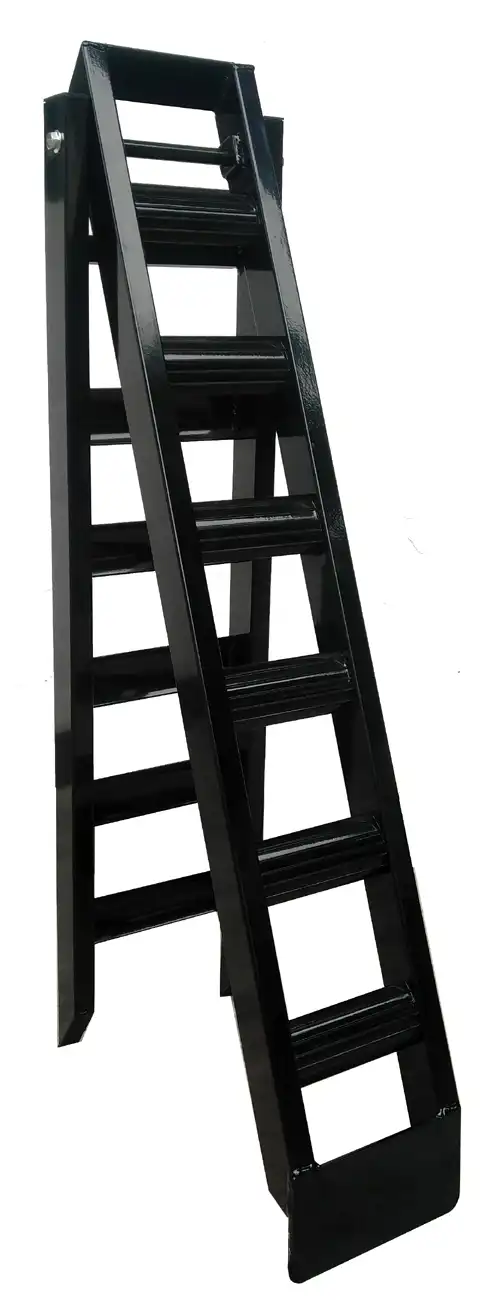Choosing the Right Motorcycle Ramp for Solo Use
Understanding Ramp Types and Materials
When selecting a motorcycle ramp for solo use, it's essential to consider the various types and materials available. While solid ramps provide more stability, folding ramps are more convenient to store and transport. Aluminium ramps are perfect for single-hand handling due to their lightweight and sturdy construction. Even though they're the strongest option, steel ramps can be a pain to move around on your own. Pick the one that best suits your demands and physical abilities; each has its benefits.
Weight Capacity and Length Considerations
Ensure the motorcycle ramp you choose can support your motorcycle's weight with an ample safety margin. A ramp's weight capacity should exceed your bike's weight by at least 25% to account for dynamic loading. The length of the ramp is equally important; longer ramps provide a gentler incline, making it easier to load and unload your motorcycle safely when alone. A good rule of thumb is to select a ramp that's at least four times the height of your loading surface.
Features for Enhanced Solo Safety
Look for ramps with safety features that facilitate solo use. Non-slip surfaces or tread patterns provide better traction, reducing the risk of your motorcycle sliding during loading. The ramp may be stabilised and kept from shifting with the help of adjustable support brackets. For safe attachment to your vehicle or loading platform, some ramps come with built-in straps or hooks. When you're using the ramp by yourself, these features can make it much safer.
Preparing for Safe Solo Loading and Unloading
Setting Up a Secure Loading Area
Before attempting to use your motorcycle ramp alone, it's crucial to prepare a safe loading area. Choose a level surface with ample space for maneuvering. Clear the area of any obstacles or debris that could interfere with the loading process. If loading onto a trailer or truck bed, ensure the vehicle is parked on even ground and the parking brake is engaged. Place wheel chocks behind the vehicle's tires for added stability.
Proper Ramp Positioning and Attachment
Correct ramp positioning is vital for solo safety. Align the ramp with your loading surface, ensuring it's centered and straight. Securely attach the ramp to your vehicle or loading platform using the manufacturer-provided straps or hooks. Double-check that the ramp is firmly seated and won't shift during use. If your ramp has adjustable support legs, extend them to provide additional stability.
Personal Protective Equipment (PPE) for Solo Ramp Use
When using a motorcycle ramp alone, wearing appropriate PPE is non-negotiable. Always wear a DOT-approved helmet to protect your head in case of a fall. Sturdy boots with good traction will help you maintain footing on the ramp. Gloves provide better grip on the handlebars and protect your hands. Consider wearing knee and elbow pads for additional protection. Having a spotter is ideal, but when working alone, proper PPE becomes even more critical.
Techniques for Safe Solo Motorcycle Loading and Unloading
Proper Body Positioning and Balance
Maintaining the right body position is crucial when using a motorcycle ramp alone. Stand on the left side of your motorcycle, gripping the left handlebar and holding the brake lever. Keep your body upright and your weight centered. As you walk the bike up the ramp, take small, controlled steps. Avoid leaning too far forward or backward, which could cause you to lose balance. If you feel the bike becoming unstable, don't hesitate to stop and reassess your position.
Controlled Ascent and Descent Techniques
When ascending the ramp, use the motorcycle's power to assist you. Start in first gear and apply gentle, steady throttle. Keep your feet ready to touch the ground if needed. For descent, use engine braking and the rear brake to control your speed. Never use the front brake while on the ramp, as this can cause the front wheel to lock and the bike to topple. If you're not confident using the engine, you can also walk the bike down in neutral, using the rear brake for control.
Emergency Procedures and Safety Precautions
Even with careful preparation, emergencies can occur. Always have a plan in place. If you feel the motorcycle becoming unstable, immediately release the throttle and gently apply the rear brake. If possible, lean into the ramp to prevent tipping. In case of a potential fall, prioritize your safety over the bike's. Let go of the motorcycle and move away quickly to avoid being pinned. Keep a fully charged mobile phone within reach in case you need to call for assistance. Remember, it's always better to ask for help than to risk injury by attempting a maneuver you're not comfortable with.
Conclusion
Any rider would benefit greatly from learning how to use a motorcycle ramp on their own. By choosing the right equipment, preparing thoroughly, and employing proper techniques, you can safely load and unload your motorcycle without assistance. Continuously put your security to begin with, ride gradually and purposely, and do not be perplexed to halt or reassess your circumstance if you feel uneasy. You will learn to ride your motorbike with more consolation and affirmation if you follow to these security rules.
Contact Us
For more information about our high-quality motorcycle ramps and other motorcycle accessories, please contact us at info@runva.com.cn. Our team is dedicated to providing you with the best products and advice to ensure your motorcycling journey is safe and enjoyable.

_1737625693698.webp)


